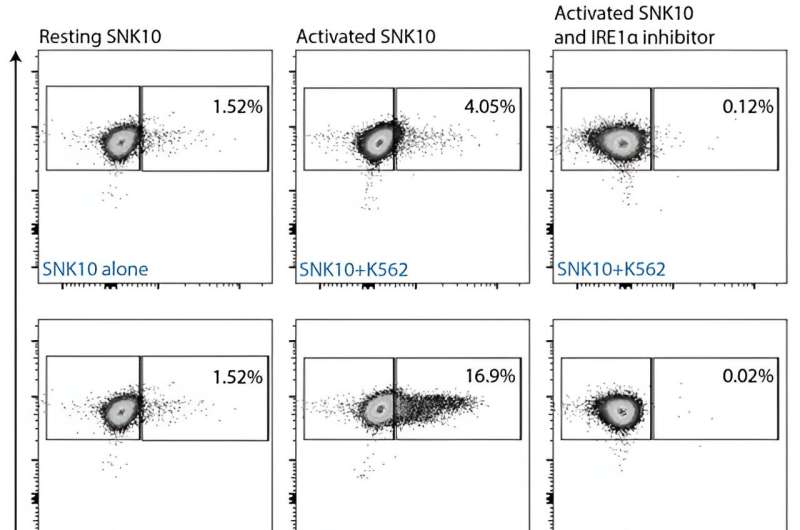This article has been reviewed according to Science X's editorial process and policies. Editors have highlighted the following attributes while ensuring the content's credibility:
fact-checked
trusted source
proofread
Researchers uncover molecular mechanism of natural killer cell dysfunction in Hodgkin lymphoma

A multidisciplinary research team comprising the Griffith Institute for Drug Discovery (GRIDD, Griffith University), Mater Research (based at the Translational Research Institute) and The University of Queensland's (UQ) Frazer Institute, have made a breakthrough discovery in the body's immune response to the blood cancer Hodgkin Lymphoma.
Led by GRIDD's Dr. Alex Cristino and Mater Research's Professor Maher Gandhi, the study shows the detection of a novel molecular mechanism contributing to Natural Killer (NK) cell dysfunction in Hodgkin Lymphoma patients. The research is published in the journal Acta Haematologica.
NK cells are innate immune response cells that play a critical role in identifying and eliminating cancerous or abnormal cells.
Dr. Cristino said, "Akin to soldiers at the body's front line of defense, NK cells activation is disrupted by Hodgkin Lymphoma, confusing the essential IRE1α pathway with conflicting signals of 'attack' and 'hold back' messages simultaneously.
"Our study identifies a gene network connecting a central cellular stress sensor (IRE1α/XBP1 pathway) to directly affect the regulation of small RNAs involved in the control of the immune checkpoint inhibitor called Programmed cell death protein 1 (PD-1), a key molecule that revolutionized immunotherapy for cancer treatment."
Professor Maher Gandhi added that cancer cells can evade the immune system by expressing another ligand to the immune checkpoint PD-1, named PD-L1 (or programmed death-ligand 1), which the cancer cells essentially use as a shield.
"PD-L1 on cancer cells interacts with PD-1 on immune cells, essentially tricking them into ignoring the cancerous threat with current immunotherapies relying on antibodies to block this interaction," he said.
Dr. Cristino explained while current immunotherapies may be effective in many cases, they can be overly aggressive on the body, prompting severe side effects, and do not address how immune cells produce PD-1 in the first place.
The research team, which included UQ Ph.D. students Karolina Bednarska and Gayathri Thillaiyampalam, identified a specific gene network involving key molecules such as XBP1 and microRNA-34a that regulates PD-1 production, providing a new target for potential novel immunotherapies.
Dr. Cristino said, "By gaining insight into the mechanism of production of PD-1, we can investigate novel approaches to interfere with the inhibitory interactions between cancer and immune cells, potentially enhancing the innate immune response to cancers and developing targeted treatments that minimize side effects."
Professor Gandhi suggested the study is relevant for effective development in cancer immunotherapy, harnessing NK cells and immune checkpoint inhibitors.
"Our research not only sheds light on the underlying causes of NK cell dysfunction in Hodgkin Lymphoma but also opens the door to exploring innovative immunotherapeutic strategies targeting blood cancers," he said.
More information: Karolina Bednarska et al, The IRE1α Endonuclease Plays a Dual Role in Regulating the XBP1/miRNA-34a Axis and PD-1 Expression within Natural Killer Cells in Hodgkin Lymphoma, Acta Haematologica (2024). DOI: 10.1159/000536044


















